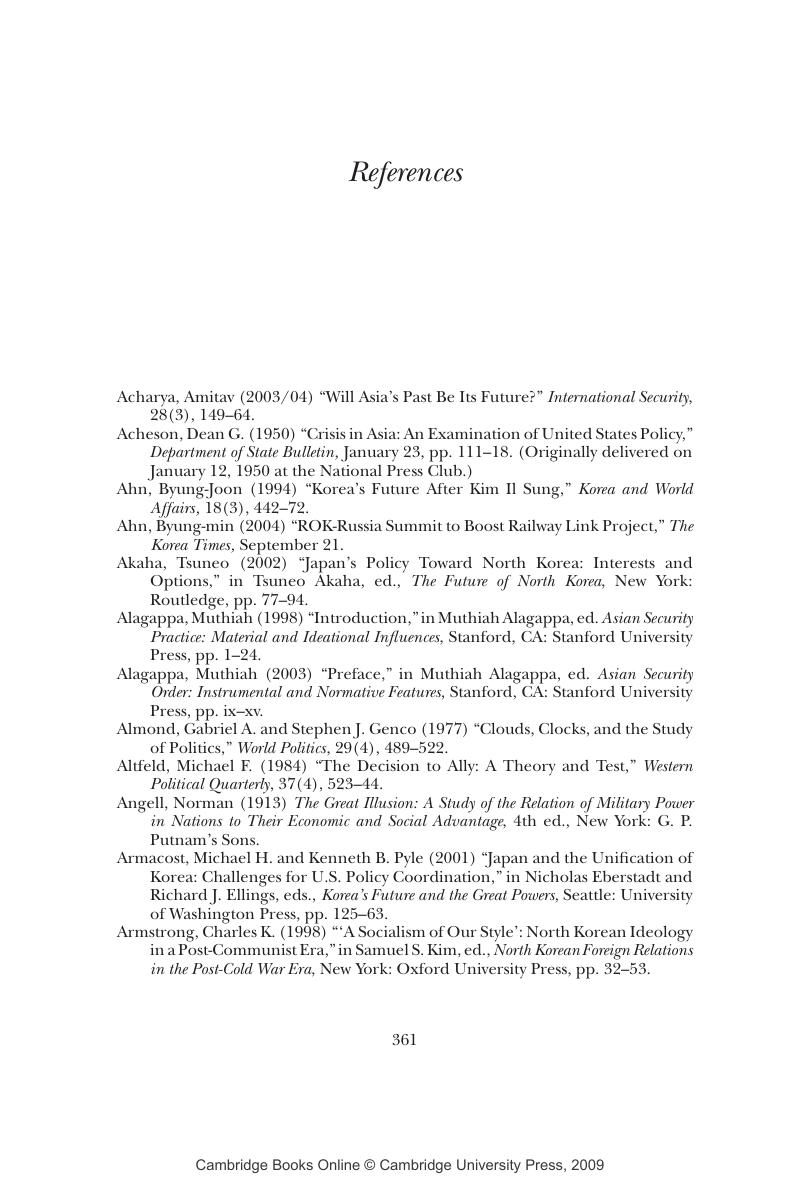Book contents
- Frontmatter
- Contents
- List of Tables and Figures
- Preface
- Chapter 1 Introduction: Korea and the Great Powers in a Changing World
- Chapter 2 China and the Two Koreas
- Chapter 3 Russia and the Two Koreas
- Chapter 4 Japan and the Two Koreas
- Chapter 5 The United States and the Two Koreas
- Chapter 6 The Future of the Two Koreas
- References
- Index
- References
- Frontmatter
- Contents
- List of Tables and Figures
- Preface
- Chapter 1 Introduction: Korea and the Great Powers in a Changing World
- Chapter 2 China and the Two Koreas
- Chapter 3 Russia and the Two Koreas
- Chapter 4 Japan and the Two Koreas
- Chapter 5 The United States and the Two Koreas
- Chapter 6 The Future of the Two Koreas
- References
- Index
- References
Summary

- Type
- Chapter
- Information
- The Two Koreas and the Great Powers , pp. 361 - 394Publisher: Cambridge University PressPrint publication year: 2006



